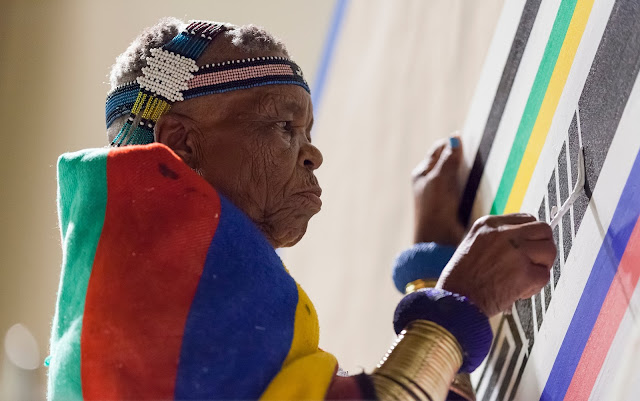This music video was the best encounter of the week
i really love the art direction of this music video, the styling all creative content is so perfect, on top of that, i came across to know, this music video is also a homage to Malick Sidibe, his photography art aesthetics,
glad to know, that one of my favorites art fashion duo, are featuring in this music video "The Art Comes first " Shaka Maidoh & Sam Lambert, remind that Sam have roots from bakongo ethnicity.
Check the below the music video
Baloji - Capture ft. Muanza, Petite Noir
Bit About Balogi
Baloji born 12 September 1978 in Lubumbashi, Congo is a Belgian rapper, MC and hip hop artist of Congolese origin, Baloji is also a poet, composer-lyricist, scriptwriter, actor and performer, video artist and stylist. His music stands at the crossroads of African music, traditional and afro-american music (soul, funk, jazz) discovered through the culture of sampling and electronic music (trance, deep house) which has its roots in part in the region of Belgium where Baloji grew up. Baloji means “man of science” in Swahili, but during the colonial period, that meaning shifted to “man of the occult sciences and sorcery”.
By placing his resilience at the centre of his work, Baloji reconciles all these influences to enrich his projects.
-----------------------------
Art Comes First Duo and Brand
Art comes first is design duo based in London Uk, with immaculate personal style the duo with names Shaka Maidoh & Sam Lambert are Brand Consultancy, Sartor, Alchemy, Progression.
Sam: I became a designer after his photograph studies. It was more out of necessity to dress himself with the right garment which fitted right and had right fabrication. he used to be around vintage market a lot when he moved to London so he end up customising everything he would buy, The focus on menswear was really more like a self test almost like a mad scientist trying medicine on himself first. Shaka: The team dynamics sparked off from common interests in vintage, traditions, cultures, hobbies and really a need to create. Creation became a necessity where the end product translated to piece of clothing, art pieces, personal wardrobe.
Sam Lambert: I was born in Angola and grow up between Spain and UK. Father was a bespoke tailor and mother was a TRADER who traveled everywhere.
Shaka Maidoh: His father's a Sartor from West Africa Ghana and mother's a retired nurse from the West Indies. he was born and bred in West London and have lived in various places in between.
edited by Celeste // dumbanenguebyceleste April 016 Stockholm Sweden
Via :









